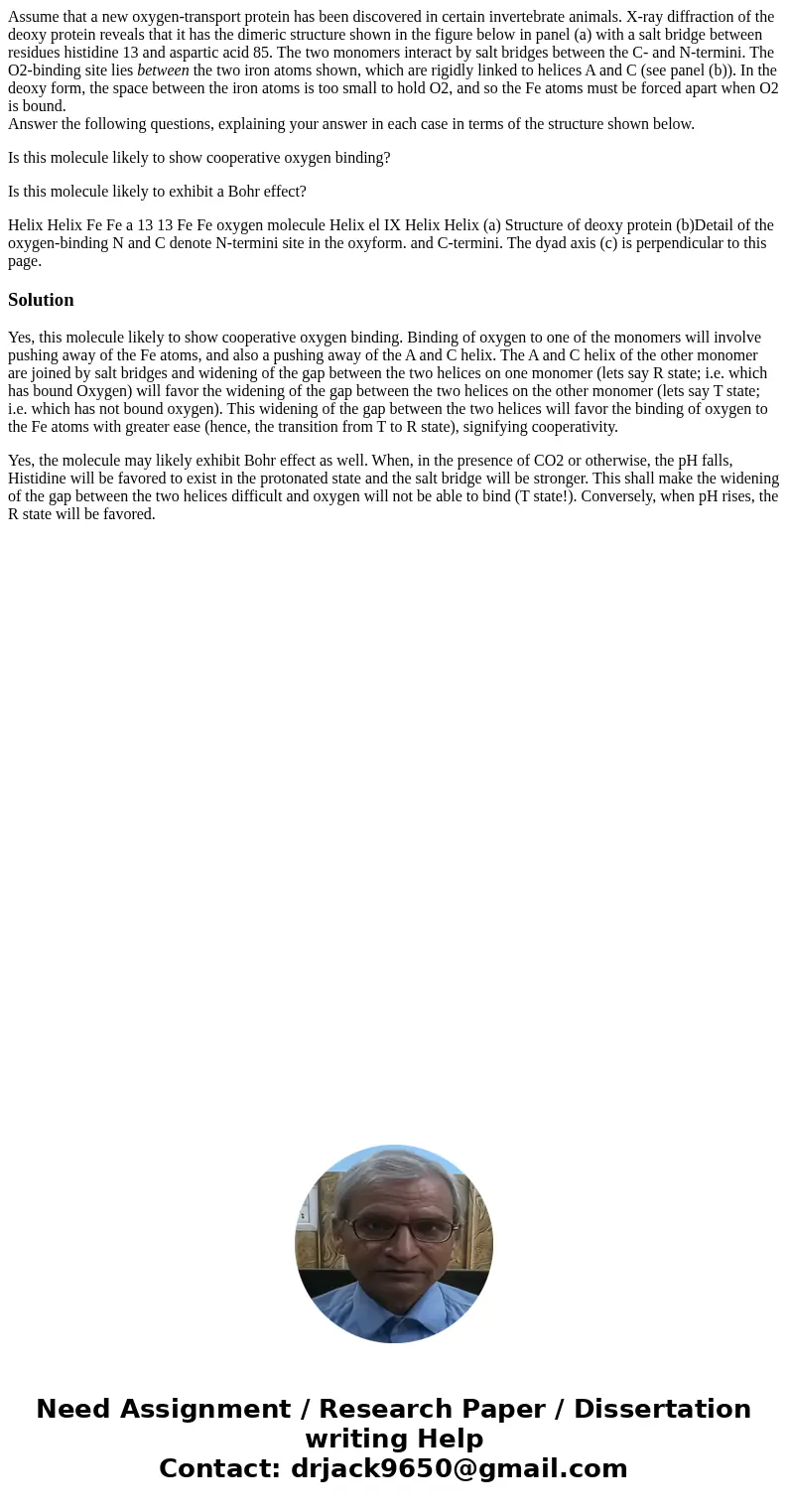Assume that a new oxygentransport protein has been discovere
Assume that a new oxygen-transport protein has been discovered in certain invertebrate animals. X-ray diffraction of the deoxy protein reveals that it has the dimeric structure shown in the figure below in panel (a) with a salt bridge between residues histidine 13 and aspartic acid 85. The two monomers interact by salt bridges between the C- and N-termini. The O2-binding site lies between the two iron atoms shown, which are rigidly linked to helices A and C (see panel (b)). In the deoxy form, the space between the iron atoms is too small to hold O2, and so the Fe atoms must be forced apart when O2 is bound.
Answer the following questions, explaining your answer in each case in terms of the structure shown below.
Is this molecule likely to show cooperative oxygen binding?
Is this molecule likely to exhibit a Bohr effect?
Helix Helix Fe Fe a 13 13 Fe Fe oxygen molecule Helix el IX Helix Helix (a) Structure of deoxy protein (b)Detail of the oxygen-binding N and C denote N-termini site in the oxyform. and C-termini. The dyad axis (c) is perpendicular to this page.Solution
Yes, this molecule likely to show cooperative oxygen binding. Binding of oxygen to one of the monomers will involve pushing away of the Fe atoms, and also a pushing away of the A and C helix. The A and C helix of the other monomer are joined by salt bridges and widening of the gap between the two helices on one monomer (lets say R state; i.e. which has bound Oxygen) will favor the widening of the gap between the two helices on the other monomer (lets say T state; i.e. which has not bound oxygen). This widening of the gap between the two helices will favor the binding of oxygen to the Fe atoms with greater ease (hence, the transition from T to R state), signifying cooperativity.
Yes, the molecule may likely exhibit Bohr effect as well. When, in the presence of CO2 or otherwise, the pH falls, Histidine will be favored to exist in the protonated state and the salt bridge will be stronger. This shall make the widening of the gap between the two helices difficult and oxygen will not be able to bind (T state!). Conversely, when pH rises, the R state will be favored.

 Homework Sourse
Homework Sourse